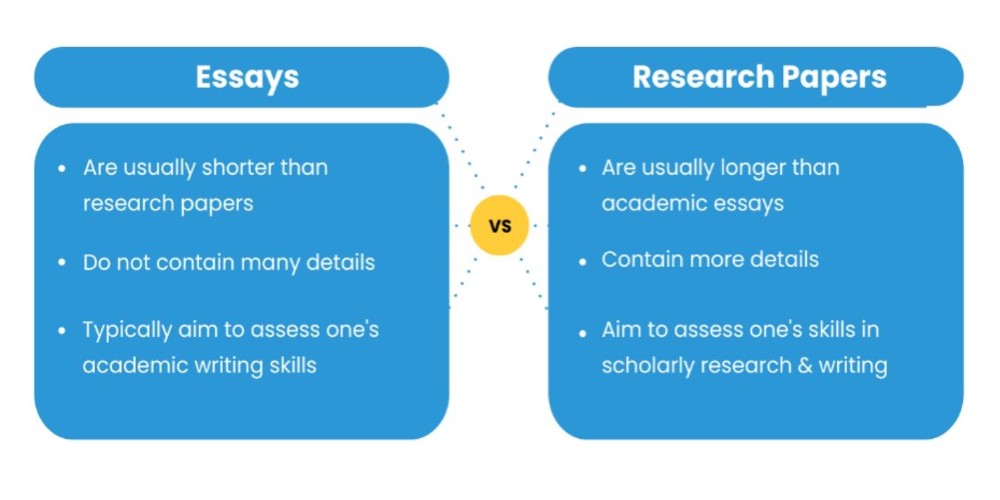Only two words, but you already feel a chill down your spine. A research paper is no joke. It’s a super detailed piece of academic writing where you analyze a chosen issue in-depth. The main aim of such torture is to show how knowledgeable you are and that your opinion can be a valuable asset for the field.
However, you should worry too much about it. The secret to a fabulous paper is to break it down into small tasks! Therefore, to successfully finish this task and stay sane, we only need to answer one question: What are the steps to writing a research paper? Continue reading this article by Custom-Writing.org experts, and soon you’ll get the answer!
Research papers can be kind of compared to essays since they both share a similar structure. However, the kind of paper we are talking about here is much longer and more detailed.

Research papers require in-depth analysis and critical thinking, along with the ability to synthesize information and present findings coherently. For some students, it may be daunting to balance the workload of research, writing, and editing. That’s where our affordable research papers can be handy. Our service connects you with experts who give guidance on any part of the academic writing process.
Moreover, unlike with essays that present your writing skills, the research paper is needed to check your scholarly abilities. It makes sense that you would also need to spend more time looking through various sources and picking only the most credible ones. You need more self-managing skills to finish this assignment on time and with no stressing. But you can find everything you need in this short guide, which explains every step from getting ready to proofreading and editing!
👣 How to Write a Research Paper Step by Step
STEP #1. Read your assignment.
The first step to writing a research paper is, of course, reading your assignment. Make sure you understand the formatting requirement, when the deadline is, and what you are asked to do.
STEP #2. Choose your topic.
Now, you can concentrate on choosing your topic. There are many ways to come up with ideas, so it depends on what is more comfortable for you.
STEP #3. Do preliminary research.
It’s time to take some time doing preliminary research. On this stage, you need to go through all the sources related to the subject. You can check out college research paper examples on the same topic for better understanding of the direction you should take your paper on, or to get additional resources.
STEP #4. Make a thesis statement.
If there is any focal point of your research paper, this is it. Your thesis should be as coherent and logical as possible.
STEP #5. Outline your paper.
Don’t skip writing an outline. Even though you usually see it as a total waste of time, the rest of the process gets much more efficient with it!
STEP #6. Make a draft.
Write a draft of your research paper. The first version is never perfect, so you shouldn’t aim for it. Also, there is no need to start with the introduction; you can always choose any other part if it’s easier for you.
STEP #7. Revise & format it.
After you finish all three parts of your paper, it’s time for the final touches. Revision and proofreading are essential parts of the writing process. They ensure that your work meets all the requirements and looks neat.
You’ll find more details on how to write a research paper in the below sections and in another useful article from this blog.
🕵 Step 1. Choosing Your Research Paper Topic
The first step to writing a research paper is to choose a topic. It should be:
How to title a research paper according to your subject? Try rereading – you will find many exciting things in your notes to turn into a research paper title.
It’s also useful to read some works written by previous students. Ask your professor where you can find examples, and investigate their topics. It will inspire you to write a paper on an important issue.
Research Paper Topics
- Research on transportation and logistics management operations.
- Research paper on the importance of USMCA to the regional cooperation and trade between the USA, Canada, and Mexico.
- Write a research paper on the benefits and risks of Public-Private Partnerships projects.
- Research the history of the Ku Klux Klan and its impact on the community.
- Research paper on Hamlet and Gertrude relationship.
- Examine the problem of racism in Minnesota.
- Research the attitude to marriage by different characters in Jane Austen’s Pride and Prejudice.
- Study the positive and negative effects of camaraderie in the workplace.
- Write a research paper on the role of new technologies in criminology.
- Research on target costing and the impact of targeting.
- Investigate the contribution of arts to the economic recovery of the Philippines.
- Research the organizational behavior at Etihad Airlines and its impact on company functioning.
- Examine the importance of strategic innovations to start-up companies.
- Analyze the peculiarities of cultural shifts in the United States.
- Study the specifics of criminal justice in the USA and its impact on the vulnerable population.
- Neighbors by Raymond Carver: research paper.
- Write a research paper on theological history.
- Research the crucial role of ethics in the field of engineering.
- Explore the benefits and risks of individual long-term investments.
- Research paper on the strategic management of Caterpillar Inc.
- Analyze the benefits and drawbacks of different economic development models.
- Write a research paper on technical barriers to trade.
- Examine the causes and outcomes of British abolitionism.
- Research paper on the importance of the Supreme Court decision.
- Research the aspects of social rights in the early 19th century in the US.
- Investigate the history and beliefs of Hinduism and Buddhism.
- Explore the effectiveness of the grapefruit diet for weight loss.
- Analyze whether keeping domestic animals is beneficial for human health.
- Write a research paper on the specifics of campaign finance reform.
- The theme of bravery in Antigone by Sophocles: research paper.
- Research the macroeconomic structure of Netflix.
- Examine the origin of the “cancel culture” phenomenon.
- Investigate the rates and causes of human trafficking.
- Explore the aspects that influence consumer decision-making.
- Conduct research on the role and regulations of retail pharmacy.
- Analyze and compare the most popular religions in America.
- Themes in Death of a Salesman by Arthur Miller: research paper.
- Examine the eldercide problem and the need for advanced care of elderly people.
- Research the effectiveness and necessity of pain medications.
- Write a research paper on defining the most suitable country for a comfortable stay.
- Conduct research on the aspects and urgency of white-collar crimes issue.
- Research paper on the feasibility of Helpmewrite.ai software.
- Analyze the problem of maternal mortality and its effect on global health.
- Examine the effectiveness of electronic word-of-mouth marketing.
- Explore the reasons and types of workplace deviance.
- Research the strengths and weaknesses of social welfare policy.
- Study the connection between scheduled sleep behavior and stress level.
- Research paper on the historical context of Pride and Prejudice by Jane Austen.
- Write a research paper on the role of the abolitionist movement.
- Analyze the purposes and aspects of the darknet.
🔎 Step 2. Doing Preliminary Research
How to start a research paper? By doing research, of course! In the beginning, you should determine where to find information. We have some tips on how to use the sources most effectively.
- Use Google search keywords. Find materials only on trusted websites. You can do this by Googling according to the following formulas:
- “keyword” + nurl:.edu
- “keyword” + nurl:.gov
- Don’t use Wikipedia. In the majority of colleges and universities, there is a ban on using Wikipedia as a resource. Don’t believe the facts it offers. Instead, search for information from trusted sources.
- Ask your professor. Everything from your topic to paper style should be coordinated with your professor. Don’t be shy to verify what research sources to use. At a minimum, you will know a couple of useful links, books, and surveys.
- Use scholarly databases. There are databases developed to hold information that is often used for academic writing. They are perfect for college and university students. For example, you can use JSTOR, Google Scholar, or Academic Search.
❗ Step 3. Making a Thesis Statement
While analyzing the sources, try to take some notes and put down any questions that pop up in your head. For instance, if there is something you think is worth mentioning in your research paper, write it in the form of a question. This way, you prepare for the next step, which is creating a thesis statement. And if you already decided on a research question, this statement should be able to answer it.
You need a decent thesis statement because it serves as a central element of your writing. Essentially, it allows your readers to understand the purpose of the paper.
An effective thesis statement should be short but coherent and comprehensive. You need to describe your main arguments and briefly mention the evidence in only a couple of sentences. Typically, it is written at the end of the introduction.
It doesn’t have to be the final version since you can make changes throughout the whole writing process. As you conduct more research, you may find more ideas for the paper. However, even the version you create right now can serve as a guide later. While you’re working on the research paper’s main body, make sure every paragraph supports the thesis statement. It is vital that all of your arguments relate to it.
📑 Step 4. Making a Research Paper Outline
If it’s your first writing assignment of this type, perhaps, parts of a research paper aren’t familiar to you. Below all the categories that should be present in a research paper outline.
- Title
- Abstract
- Introduction
- Methods
- Results
- Discussion
- Conclusion
- References
✒️ Step 5. Drafting Your Research Paper
Now it’s the time to start writing your paper. We collected several techniques and tricks that will help you write all of the outline components listed above.
Research Paper Title
Many students face this problem: you have a research paper topic and even some written material but don’t know how to title your work. If you don’t develop a good research title, the pages don’t make any sense. What are you creating? Why is this important? The audience will ask many questions. But it is you who actually should ask yourself first.
Then combine the answers you get into a clear, informative title for a research paper.
Research Paper Abstract
The abstract isn’t a typical section for students who only write essays. So it may be a challenging task. Let’s look at the main characteristics of a good abstract:
Research Paper Introduction
The introduction to a research paper is your first chance to make a great impression on the audience.
For success writing an introduction to a research paper, make it perfect with the help of:
Methods Part of a Research Paper
Some call the methods section of a research paper the core of the writing. Its importance relates to the fact that all the tools of your investigation are listed here.
What can you include in the methodology of a research paper?
Research Paper Results
The results of a research paper show the outcome of your work. To develop an excellent scientific research paper, you should prepare your surveys and investigations so the results will be effortless to formulate.
Here are the main tips on how to do it:
Discussion Section of a Research Paper
To write the discussion section of a research paper, find some points that will state your ideas. You should talk about:
- Findings
- Results
- Explanations
- Limitations
- New ideas
- Future directions
This is a section where self-criticism takes place—you can’t draw a good conclusion if you don’t evaluate your work with all its advantages and flaws. It would help if you also showed in this paragraph whether your research proved the results of other specialists or not.
Research Paper Conclusion
The question of how to end a research paper is an important one. You may think: We’ve already had a results section; why do we need a conclusion? A conclusion for a research paper doesn’t only show your achievements. The main function of this section is to leave the reader with a final impression. For example, you can invoke in people the desire to be more conscious of nature by sharing the facts about global warming.
Research Paper References
It’s always essential to write a bibliography, noting every article, book, or lecture that helped develop your project. When writing a reference page for a research paper, make sure you’re following the chosen format, such as APA or MLA style. Incorrect formatting can lead to a lower grade and less value to your paper.
The reference section is a challenging part. Each type of source should be written according to its specific rules. If you have any doubts on how to make the references, take a look at our APA and MLA research paper samples in the corresponding section. And the next one contains useful links that will help you format your research paper.
🔤 Step 6. Revising and Formatting Your Research Paper
The format of a research paper varies depending on the college or university you’re writing for. Be careful to follow the instructions your professor gives. You’ll know what length you should make your writing, what style to use for quotations and references, how to make a title page, and so on. No need to worry if something’s difficult to memorize. For instance, you can use an APA title page generator to at least cross this part of the paper off of your to-do list.
If you want to learn more about paper editing and revising, feel free to read this article. We also developed detailed guides on MLA and APA styles. You can use them for your research paper. The examples of how to properly cite books can be downloaded on your computer to use whenever it’s needed:
Can You Use Personal Experience in a Research Paper?
It could be useful to describe your personal experience in a research paper if you are considered a recognized expert in the field. Otherwise, you shouldn’t do it since the evidence and facts you use to support the arguments need to be strong. Therefore, it would only be wise to use trustworthy and respectable outside sources.
😸 Research Paper Examples
Below you’ll find two research paper examples. The first one is APA, and the second is MLA. Note that the full versions of the texts are downloadable for free!
Example #1: Child Abuse in Low-Income Families in the US (APA)
Example:
Child abuse is more prevalent in low-income families when compared to other populations in the United States. The global prevalence of this issue is at 22.3%, and the people living in poverty experience abuse as children more often when compared to others (Levely et al., 2017). Among the effects of child abuse on a person’s wellbeing, there are mental health problems, including trauma and low resilience to suicidal behavior. Additionally, physical health problems, for instance, chronic inflammation, are also associated with child abuse. However, there is no single intervention strategy that would target child abuse mitigation, which was tested and proven effective by multiple studies because this issue requires more research to define the exact causes. This study examines the different causes of child abuse in low-income families in the United States.
Example #2: Business Ethics (MLA)
Example:
Business ethics is a rapidly developing and promising academic field. Although some of its forms can be traced back to the earliest trading practiced in prehistoric human society, as a full-fledged discipline, it emerged in the second half of the last century (Wood 627). The discipline’s main objective is to equip entrepreneurs and managers with instruments allowing them to make more responsible decisions. The notion appeared to replace business philosophy in which the “greed is good” mantra dominated till the 1990s (Wood 632). The discipline will be investigated in the context of its relevance and applicability in the modern business. Business ethics is an indispensable academic field and instrument that prompts a company to reach the desired growth without employing morally dubious methods.
🔗 References
- 15 Steps to Good Research (Georgetown University Library)
- This Is How to Write an Effective Research | Grammarly
- Writing a Research Paper – The Writing Center – UW–Madison
- Research Papers | KU Writing Center
- What Is a Research Paper? – ThoughtCo
- A guide to writing an academic paper – The Washington Post
- How to write a first-class paper – Nature
- Formatting a Research Paper – Writing for Success
- 11 steps to structuring a science paper editors will take seriously
- Scientific Writing Made Easy: A Step‐by‐Step Guide
- Academic Writing Style – Organizing Your Social Sciences Research Paper









![Ultimate Report Writing Tips for Students: Best Ideas [Free]](https://custom-writing.org/blog/wp-content/uploads/2021/01/business-desk-with-keyboard-report-graph-284x153.jpg)


You have discussed all the topics which I need. Thanks for sharing it